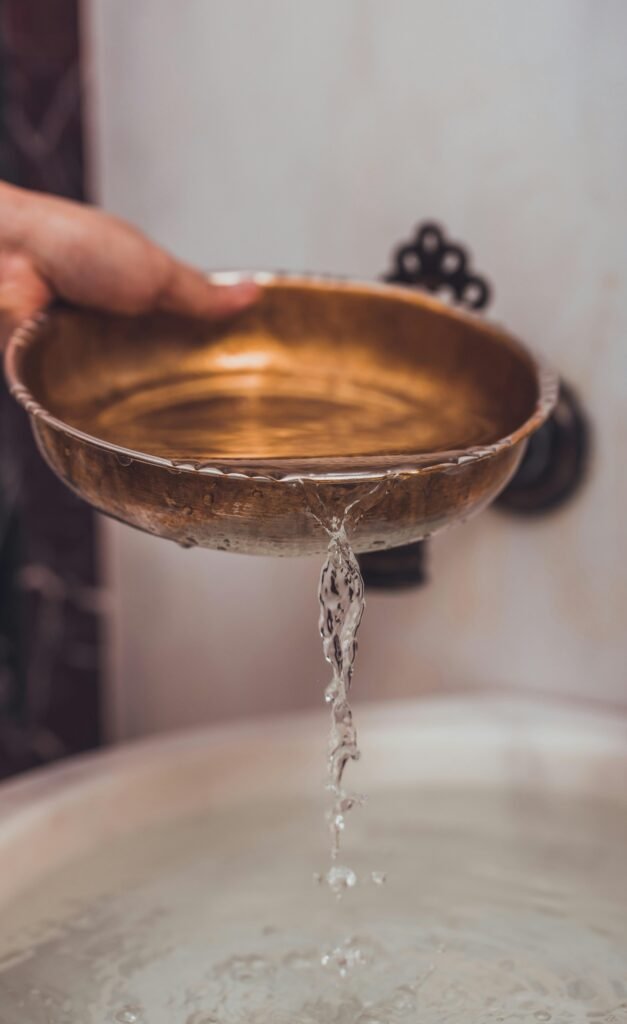In this comprehensive guide, you will discover the ultimate techniques to effectively clean plastic containers. Whether you use them for storing leftovers, organizing your pantry, or packing lunches, keeping your plastic containers clean is essential for maintaining their longevity and ensuring food safety. From simple tips for everyday cleaning to deep-cleaning methods, this guide will equip you with all the knowledge you need to achieve sparkling clean and odor-free plastic containers. Say goodbye to stubborn stains and unpleasant smells, and say hello to a perfectly clean and fresh storage solution.

This image is property of images.pexels.com.
Choosing the Right Cleaning Supplies
When it comes to cleaning your plastic containers, it’s important to choose the right cleaning supplies to ensure effective and safe cleaning. However, there are certain types of cleaning supplies that you should avoid using on plastic containers. These include harsh chemicals, abrasive cleaners, and scrub brushes with stiff bristles. These can cause scratches and damage to the plastic, making it more prone to stains and odors.
Instead, opt for cleaning supplies that are specifically designed for plastic surfaces. Look for mild dish soap, vinegar, baking soda, lemon juice, and soft sponges or cloths. These gentle cleaning agents will effectively clean your plastic containers without causing any damage.
Pre-Cleaning Preparation
Before diving into the cleaning process, it’s important to properly prepare your plastic containers. This involves a few simple steps to ensure that the cleaning process goes smoothly and effectively.
Start by clearing out the container. If there are any leftover contents, empty and discard them appropriately. Next, remove any stuck-on food or stains from the container. You can use a gentle scrub brush or sponge to gently scrub away any residue. If your plastic container has removable parts, such as a lid or compartments, be sure to disassemble them before cleaning.

This image is property of images.pexels.com.
General Cleaning Guidelines
When it comes to cleaning plastic containers, there are a few general guidelines that you should keep in mind. First, consider whether you want to handwash your containers or clean them in a dishwasher. Handwashing is a more gentle option and is recommended for containers that are not dishwasher-safe.
If you choose to handwash your plastic containers, use warm water and mild dish soap. Avoid using hot water, as it can cause the plastic to warp or lose its shape. Use a soft sponge or cloth to gently scrub the container, paying extra attention to any stains or residue. After cleaning, be sure to thoroughly rinse off all the soap to avoid leaving any residue behind. Finally, allow the container to air-dry completely before using or storing it.
On the other hand, if you prefer to clean your plastic containers in a dishwasher, there are a few considerations to keep in mind. First, always check if the container is dishwasher-safe before cleaning it in the dishwasher. Some plastic containers may not be able to withstand the high heat settings or harsh detergents used in dishwashers.
When placing the container in the dishwasher, make sure it is securely placed on the top rack to avoid any damage from the water spray. Use a gentle dishwasher detergent specifically designed for plastic items to avoid any potential damage. Additionally, avoid using high heat settings as they can warp or melt the plastic. Once the cleaning cycle is complete, allow the container to air-dry before using or storing it.
Removing Stains and Odors
Over time, plastic containers can develop stains and unpleasant odors. Thankfully, there are some effective methods to remove these stains and freshen up your containers.
For mild stains and odors, soaking the container in a mixture of warm water and vinegar can work wonders. Vinegar is a natural disinfectant and can help remove stains and neutralize odors. Simply fill a sink or basin with warm water and add a small amount of vinegar. Allow the container to soak for a few hours, then rinse and air-dry.
For tougher stains, you can make a baking soda paste by combining baking soda with a small amount of water. Apply the paste to the stained areas and let it sit for a few hours or overnight. Then, scrub the stained areas with a soft sponge or cloth. This method is especially effective for removing stubborn food stains.
To eliminate odors, you can use lemon juice. Simply squeeze fresh lemon juice into the container and let it sit for a few hours before rinsing. Lemon juice has natural antibacterial properties and can help remove any lingering odors.

This image is property of images.pexels.com.
Cleaning Specific Plastic Container Types
Different types of plastic containers may require slightly different cleaning methods. Here are some specific tips for cleaning different plastic container types:
Clear plastic containers:
Clear plastic containers are great for storing leftovers or organizing your pantry, but they can easily become stained or cloudy over time. To keep them clean and clear, follow the general cleaning guidelines mentioned earlier. Additionally, avoid using harsh cleaning agents or scrub brushes with stiff bristles, as they can scratch the plastic and make it appear cloudy.
Colored or tinted plastic containers:
Colored or tinted plastic containers can add a pop of color to your kitchen, but it’s important to handle them with care to prevent fading or discoloration. Avoid using abrasive cleaners or scrub brushes, as they can cause the color to fade or become dull. Stick to gentle cleaning agents and soft sponges or cloths to keep the color vibrant.
Plastic containers with lids or seals:
Plastic containers with lids or seals often have small crevices where food particles can get trapped. When cleaning these containers, pay extra attention to these areas. Use a small cleaning brush or toothbrush to gently scrub the crevices and remove any residue.
Plastic containers with compartments or dividers:
Plastic containers with compartments or dividers are great for meal prep or organizing snacks. When cleaning these containers, make sure to remove the compartments or dividers if they are removable. Clean them separately to ensure thorough cleaning and prevent any cross-contamination.
Cleaning Tips for Hard-to-Reach Areas
Plastic containers often have hard-to-reach areas, such as narrow openings, corners, or crevices. Here are some cleaning tips for these tricky spots:
For narrow openings, such as bottles or containers with small spouts, a bottle brush is your best friend. Use the bottle brush to reach inside the narrow opening and scrub away any residue.
For corners or crevices, a small cleaning brush or toothbrush can be very useful. Dip the brush in warm soapy water and gently scrub the corners or crevices to remove any trapped food particles or residue.
If your plastic container has removable parts that are difficult to clean, such as compartments or dividers, consider cleaning them separately. This will ensure thorough cleaning and prevent any lingering odors or stains.
Storing Clean Plastic Containers
Once your plastic containers are clean and dry, it’s important to store them properly to maintain their cleanliness and longevity. Here are some tips for storing clean plastic containers:
Ensure that the containers are completely dry before storing them to prevent the growth of mold or mildew. Even the smallest amount of moisture can lead to unpleasant odors and bacterial growth.
When stacking plastic containers, do so with care to prevent any damage. Avoid placing heavy objects on top of stacked containers, as this can cause them to warp or crack.
If your plastic containers have lids or seals, store them with the lids or seals loosely attached. This will allow air to circulate and prevent any potential odor buildup.
Maintaining Cleanliness and Longevity
To ensure the cleanliness and longevity of your plastic containers, there are a few additional tips to keep in mind:
Regularly inspect your plastic containers for any signs of damage, such as cracks or warping. If you notice any damage, it’s best to replace the container to prevent any potential food contamination or leakage.
Avoid microwaving plastic containers, as high heat can cause them to melt or release harmful chemicals into your food. Instead, transfer food to microwave-safe dishes before reheating.
Similarly, avoid freezing plastic containers, as extreme cold temperatures can cause them to become brittle and crack. Opt for freezer-safe containers if you plan to freeze food for extended periods.
Keep your plastic containers away from direct sunlight or heat sources, as this can cause the plastic to degrade and weaken over time.
Finally, when not in use, store your plastic containers in a dry and cool place. Excessive heat or humidity can lead to mold growth or unpleasant odors.
By following these proper cleaning techniques and maintenance tips, you can keep your plastic containers clean, odor-free, and in great condition for years to come. Remember, choosing the right cleaning supplies, properly preparing the containers, and being mindful of specific cleaning considerations will ensure effective cleaning and maintain the quality of your plastic containers.
